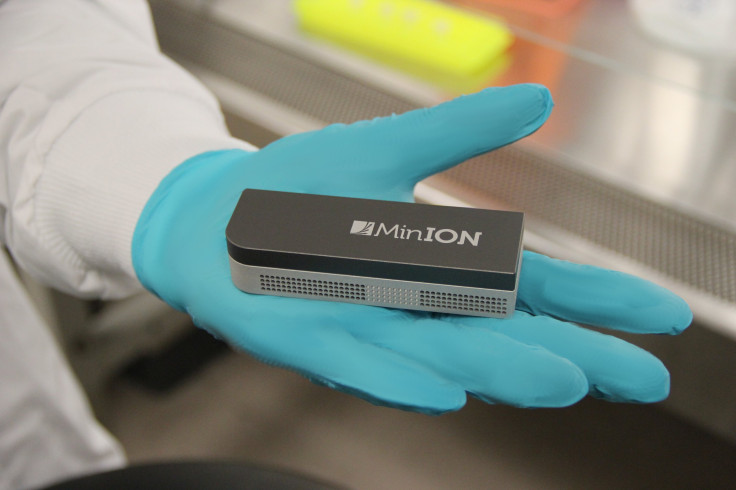New Mobile Technology Can Accurately Sequence DNA Of Viruses And Bacteria Within Hours

Antibacterial resistance is a serious problem, but many doctors continue to over-prescribe antibiotics because they don't know whether a coughing, feverish patient has a bacterial or a viral infection. If, though, they could run a quick test and immediately identify the cause of illness, doctors would most likely stop prescribing antibiotics for viral infections. A new mobile technology offers hope that such tests will be available soon. The pocket-sized MinION ‘nanopore sequencer’ accurately identified a range of closely-related bacteria and viruses within just six hours.
“We expect that as the technology improves, the sequencing will generally become cheaper, faster, and more accurate,” said Dr. Andrew Kilianski of Edgewood Chemical Biological Center and lead author of the study.
Nanopore sequencing is a particular technique for DNA analysis. To work its magic, the technology relies on protein 'nanopores.' At the core of the protein is a hollow and extremely narrow tube through which a single DNA strand can pass. As the DNA strand passes through the nanopore, the base codes of DNA can be identified by the characteristic electrical signals they emit.
Genius, right? One glitch: the MinION has an observed read error rate of 30 percent, higher than that of other sequencing methods. While the technology clearly is not yet ready for prime time, researchers would like to find practical uses for its current imperfect abilities. This new study, then, was intended to explore new ideas and so, after developing a unique approach to overcome the device’s high read error rate, the researchers performed a little test to see if they could accurately identify a group of bacterial and viral samples. However, they didn't make it easy for the MinION and chose microbial life-forms descended from a common ancestor.
Would the new sequencing device be able to tell them apart?
Using a six hour run time, the MinION generated enough data to identify an E. coli sample down to the species level. Next the inexpensive, palm-sized device correctly analyzed three poxviruses — cowpox, vaccinia-MVA, and vaccinia-Lister. Impressively, MinION differentiated these viruses down to the strain level, despite the fact that the three shared more than 98 percent of their genetic identity.
MinION is powered and operated via a USB connection plugged into a laptop. Such convenience means scientists could use it on-site in remote locations. “Our findings are important because we have for the first time communicated to the community that this technology can be incredibly useful in its current state,” Kilianski stated in a press release.
Source: Kilianski A, Haas JL, Corriveau EJ, et al. Bacterial and viral identification and differentiation by amplicon sequencing on the MinION nanopore sequencer. GigaScience. 2015.



























